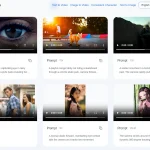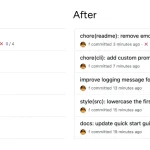Meta AI, the powerhouse behind Facebook’s innovative AI projects, has been on a roll.
This timeline will look at some of the major milestones on Meta’s AI journey, from deciphering brain signals to breakthroughs in areas like computer vision, natural language processing, and multimodal AI.
Let’s get started.
| Date | Event | Details |
|---|---|---|
| June. 2025 | Meta AI App | You Can Now Edit Videos With Meta AI. |
| Apr. 2025 | Llama API | Meta released Llama API, which provides easy one-click API key creation and interactive playgrounds to explore different Llama models. Wait List |
| Apr. 2025 | Meta AI App | Meta AI is now an app! 📱 Experience voice conversations powered by Llama 4, image generation, and more. It’s also the companion for Ray-Ban Meta glasses. Seamless AI across devices! Source |
| Apr. 2025 | Llama 4 | Meta released the first models in the Llama 4 herd: Llama 4 Scout (a 17 billion active parameter model with 16 experts) and Llama 4 Maverick (a 17 billion active parameter model with 128 experts). Source |
| Dec 2024 | Llama 3.3 | Meta just unexpectedly dropped Llama 3.3—a 70B model that’s ~25x cheaper than GPT-4o. Source |
| Oct. 2024 | NotebookLlama | An Open Source version of NotebookLM. Source |
| Oct. 2024 | Llama | Meta’s releasing its first lightweight quantized Llama models that are small and performant enough to run on many popular mobile devices. Source |
| Oct. 2024 | Spirit LM | Meta announced Spirit LM, an open source language model for seamless speech and text integration. Source |
| Oct. 2024 | Movie Gen | Meta’s new video generation model. You can use simple text inputs to produce custom videos and sounds, edit existing videos or transform your personal image into a unique video. Source |
| Sep. 2024 | Llama 3.2 | Meta’s releasing Llama 3.2, which includes small and medium-sized vision LLMs (11B and 90B), and lightweight, text-only models (1B and 3B) that fit onto edge and mobile devices, including pre-trained and instruction-tuned versions. Source |
| Aug. 2024 | Sapiens | Meta presents Sapiens for human-centric vision tasks. Source |
| Jul. 2024 | Even Video | Meta introduces the Segment Anything Model 2 (SAM 2), the first unified model that can identify which pixels belong to a target object in an image or video. Source |
| Jul. 2024 | AI Studio | A place for people to create, share and discover AIs to chat with – no tech skills required. Source |
| Jul. 2024 | Llama 3 | Meta releases Llama 3.1, its latest instruction-tuned model available in 8B, 70B and 405B versions. Source |
| Jul. 2024 | Multi-Token Prediction | This new research from Meta FAIR replaces next token prediction tasks with multiple token prediction that can result in substantially better code generation performance with the exact same training budget and data. Source |
| Jul. 2024 | JASCO | Meta JASCO (Joint Audio and Symbolic Conditioning for Temporally Controlled Text-to-Music Generation), is capable of accepting various conditioning inputs, such as specific chords or beats, to improve control over generated music outputs. Source |
| Jul. 2024 | VLMs | Vision-language models (VLMs) are a challenging area of research that holds a lot of potential. Source |
| Jul. 2024 | Chameleon | A family of models that can combine text and images as input, and output any combination of text and images with a single unified architecture capable of both encoding and decoding. Source |
| Apr. 2024 | Chatbot | A new stand-alone Meta AI chatbot available on the web. Source |
| Apr. 2024 | Llama 3 | Meta introduced Llama 3, The most capable openly available LLM to date. Source |
| Apr. 2024 | MTIA | Meta announced their next-generation Meta Training and Inference Accelerator. Source |
| Feb. 2024 | V-JEPA | Meta’s AI experts have created a new model, called Video Joint Embedding Predictive Architecture (V-JEPA). Unlike other large language models (LLMs), it learns from videos rather than text. Source |
| Feb. 2024 | Labeling AI-Generated Images | Meta is working with industry partners on common technical standards for identifying AI content, including video and audio. Source |
| Feb. 2024 | AudioSeal | A method for speech localized watermarking , with state-of-the-art detector speed without compromising the watermarking robustness. Source |
| Dec. 2023 | Seamless Communication | A family of AI research models that enable more natural and authentic communication across languages. Source |
| Nov. 2023 | Audiobox | Meta’s new foundation research model for audio generation. It can generate voices and sound effects using a combination of voice inputs and natural language text prompts. Source |
| Nov. 2023 | Emu Edit | Precise image editing via recognition and generation tasks. Source |
| Nov. 2023 | Emu Video | A simple factorized method for high-quality video generation. Source |
| Oct. 2023 | Brain Decoding | Using MEG, this AI system can decode the unfolding of visual representations in the brain with an unprecedented temporal resolution. Source |
| Jul. 2023 | Llama 2 | The next generation of Meta’s open source large language model. Available for free for research and commercial use. Source |
| Jun. 2023 | I-JEPA | The first AI model based on Yann LeCun’s vision for more human-like AI. Source |
| May. 2023 | ImageBind | The first AI model capable of binding data from six modalities at once, without the need for explicit supervision. Source |
| Apr. 2023 | DINOv2 | A new method for training high-performance computer vision models. Source |
| Apr. 2023 | SAM | Segment Anything: A step toward the first foundation model for image segmentation. Source |




